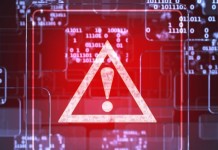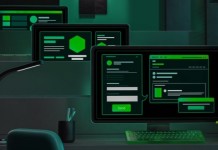![]()
Introduction
In recent months, we published private reports on a broad range of subjects. We wrote about malware targeting Brazil, about CEO fraud attempts, Andariel, LockBit and others. For this post, we selected three private reports, namely those related to LockBit and phishing campaigns targeting businesses, and prepared excerpts from these. If you have questions or need more information about our crimeware reporting service, contact crimewareintel@kaspersky.com.
Phishing and a kit
Recently we stumbled upon a Business Email Compromise (BEC) case, active since at least Q3 2022. The attackers target German-speaking companies in the DACH region. As in many other BEC cases, they register a domain name that is similar to that used by the attacked organization and typically differs in one or two letters. For reasons unknown, the Reply-to field contains a different email address from the From field. The Reply-to email address does not mimic the target-organization’s domain.
In contrast to BEC campaigns that are targeted and require significant effort from the criminals, ordinary phishing campaigns are relatively simple. This creates opportunities for automation, of which the SwitchSymb phishing kit is one example.
At the end of this past January, we observed a spike in phishing email from a campaign targeting business users, which we have closely monitored. We noticed that the message contained a link to an “email confirmation form”. If one clicked on the link, they found themselves on a page looking very similar to that of the recipient’s domain. The phishing kit was designed to serve multiple campaigns at a time while running one instance on the web server. This was easily demonstrated by modifying the page URL, specifically the reference to the targeted user in it^ the layout of the phishing page would change.
LockBit Green
LockBit is one of the most prolific ransomware groups currently active, targeting businesses all over the world. Over time, they have adopted code from other ransomware gangs, such as BlackMatter and DarkSide, making it easier for potential affiliates to operate the ransomware.
Starting in this past February, we have detected a new variant, named “LockBit Green”, which borrows code from the now-defunct Conti gang. According to the Kaspersky Threat Attribution Engine (KTAE), LockBit incorporates 25% of Conti code.
Three pieces of adopted code really stand out: the ransomware note, the command line options and the encryption scheme. Adopting the ransom note makes the least sense. We could not think of a good reason for doing so, but nevertheless, LockBit did it. In terms of command line options, the group added those from Conti to make them available in Lockbit. All the command line options available in Lockbit Green are:
| Flag | Functionality |
| -p folder | Encrypt the selected folder using a single thread |
| -m local | Encrypt all available drives within multiple threads, each of them |
| -m net | Encrypt all network shares within multiple threads, each of them |
| -m all | Encrypt all available drives and Network shares within multiple threads, each of them |
| -m backups | Flag not available to use on the detected versions but coded inside the ransomware |
| -size chunk | Functionality to encrypt only part of the files |
| -log file.log | Possibility to log every action performed by the ransomware |
| -nomutex | Skip mutex creation |
Finally, LockBit adopted the encryption scheme from Conti. The group now usesa custom ChaCha8 implementation to encrypt files with a randomly generated key and nonce that are saved/encrypted with a hard-coded public RSA key.
Multi-platform LockBit
We recently stumbled on a ZIP file, uploaded to a multiscanner, that contained LockBit samples for multiple architectures, such as Apple M1, ARM v6, ARM v7, FreeBSD and many others. The next question would obviously be, “What about codebase similarity?”.
For this, we used the KTAE: simply throwing in the downloaded ZIP file was enough to see that all the samples were derived from the LockBit Linux/ESXi version, which we wrote about in an earlier private report.
Further analysis of the samples led us to believe that LockBit were in the process of testing their ransomware on various architectures, instead of deploying it in the wild. For instance, the macOS sample was unsigned, so it could not be executed as is. Also, the string encryption method was simple: one byte XOR.
Nevertheless, our findings suggest that LockBit will target more platforms in the wild in the (near) future.
Conclusion
The world of cybercrime is huge, consisting of many players and gangs that are fluid in terms of composition. Groups adopt other groups’ code, and affiliates — which can be considered cybercrime groups in their own right — switch between different types of malware. Groups work on upgrades to their malware, adding features and providing support for multiple, previously unsupported, platforms, a trend that existed for some time now.
When an incident occurs, it is important to find out who has targeted you. This helps to limit the scope of incident response and could help to prevent further damage. The KTAE attributes code to cybercrime groups and highlights features shared by different malware families. This information can also help in taking proactive countermeasures to prevent incidents from happening in the future.
Finally, criminals often resort to old tricks, such as phishing, which, nevertheless, remain highly effective. Being aware of the latest trends can prevent threats like BEC from materializing.
Intelligence reports can help you to stay protected against these threats. If you want to keep up to date on the latest TTPs used by criminals or have questions about our private reports, contact crimewareintel@kaspersky.com.
Source: Secure List



































